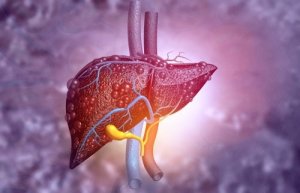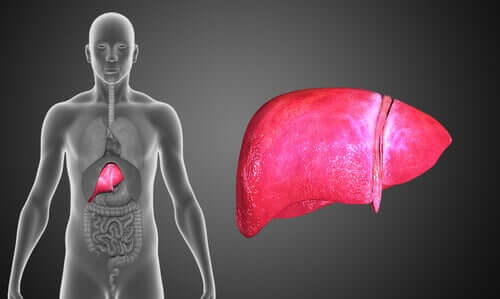Biliary Atresia: Symptoms and Treatment

Biliary atresia is a chronic and progressive liver disease that becomes evident shortly after birth.
The liver is an organ that contains well-known passages known as bile ducts. The function of these structures is to drain a compound the liver produces called bile directly into the intestines and kidneys. Bile is essential for proper digestion and transports liver waste substances to the intestines and kidneys to rid the body of them.
These bile ducts are blocked in people who suffer from biliary atresia, meaning that the bile can’t leave the liver. Thus, this organ becomes damaged, affecting many vital bodily functions.
Biliary atresia is the most common cause of liver transplants in children living in the United States. It occurs once every 18,000 births. Plus, it’s slightly more common in women than in men. Also, people with Asian or African American descent and premature babies suffer more from this disease compared to Caucasian babies.
Causes of biliary atresia

As of yet, the causes for the development of this disease are unknown. Some researchers believe that babies are born with it, meaning that it manifests during pregnancy when the liver is developing.
Other experts claim that the disease manifests after birth, possibly by exposure to toxic or infectious substances.
In principle, it’s believed that biliary atresia isn’t associated with drugs that the mother took, illnesses she’s had, or anything that she did during pregnancy.
Plus, it’s also currently unknown whether a genetic component is behind the development of the disease. However, it’s unlikely for the disease to recur more than once in a family.
The symptoms of biliary atresia
Although newborns who suffer from this condition may seem normal at birth, jaundice (yellowing of the skin and mucous membranes) manifests in the second or third week of life.
The baby may gain weight normally during the first month. After that time, the baby will lose weight, they’ll become more irritable, and their jaundice will worsen. Also, they can develop other symptoms such as:
- Slow growth
- Pale or clay-colored stools
- Dark urine
- Poor or no weight gain
- Splenomegaly (enlarged spleen)
You may also want to read: Pale or White Stool: Causes and Treatment
Treatment of biliary atresia
The therapeutic management of biliary atresia is very controversial since 80-85% of those who suffer from the disease will end up undergoing a transplant. Also, as we already mentioned above, it’s an irreversible disease. No drugs can unlock the bile ducts or foster the development of new bile ducts.
Today, Kasai portoenterostomy is considered the first line of treatment. However, as we mentioned above, it’s controversial because many experts argue the benefits of this intervention as the first line of treatment against others who defend transplantation as the primary option.
Kasai portoenterostomy
This operation aims to allow bile drainage.
Kasai portoenterostomy is more effective if performed before the baby is three months old. Also, it allows the baby to grow normally and have relatively good health for many years. However, it’s important to note that cholestasis may manifest, which is an accumulation of bile in the liver that can cause liver damage.
Read on: Everything You Need to Know About Liver Detox Diets
Liver transplant
As the name suggests, this surgery involves replacing a diseased liver with a healthy one. This new organ may come from a deceased donor, part of a liver from a deceased donor, or part of a liver of a relative or other person whose tissue type is compatible with the patient’s tissue type.
After surgery, the baby’s health often improves quickly. However, they’ll need drugs to prevent the body from rejecting the new organ. This rejection is a normal protective mechanism that tries to defend the body from viruses, tumors, and other foreign substances.
All cited sources were thoroughly reviewed by our team to ensure their quality, reliability, currency, and validity. The bibliography of this article was considered reliable and of academic or scientific accuracy.
-
Latinoamericana de Pediatría Hepatología Trasplante Hepático Pediátrico, A., Margarita Ramonet, D., & Mirta Ciocca Fernando Álvarez, D. (2014). Atresia biliar: una enfermedad grave Biliary atresia: a severe illness. Arch Argent Pediatr. https://doi.org/10.5546/aap.2014.542
-
Donat Aliaga, E., Polo Miquel, B., & Ribes-Koninckx, C. (2003). Atresia de vías biliares. Anales de Pediatria. https://doi.org/10.1157/13042982
-
Cauduro, S. M. (2005). Atresia biliar extra-hepática: métodos diagnósticos. Jornal de Pediatria. https://doi.org/10.1590/s0021-75572003000200004
This text is provided for informational purposes only and does not replace consultation with a professional. If in doubt, consult your specialist.








